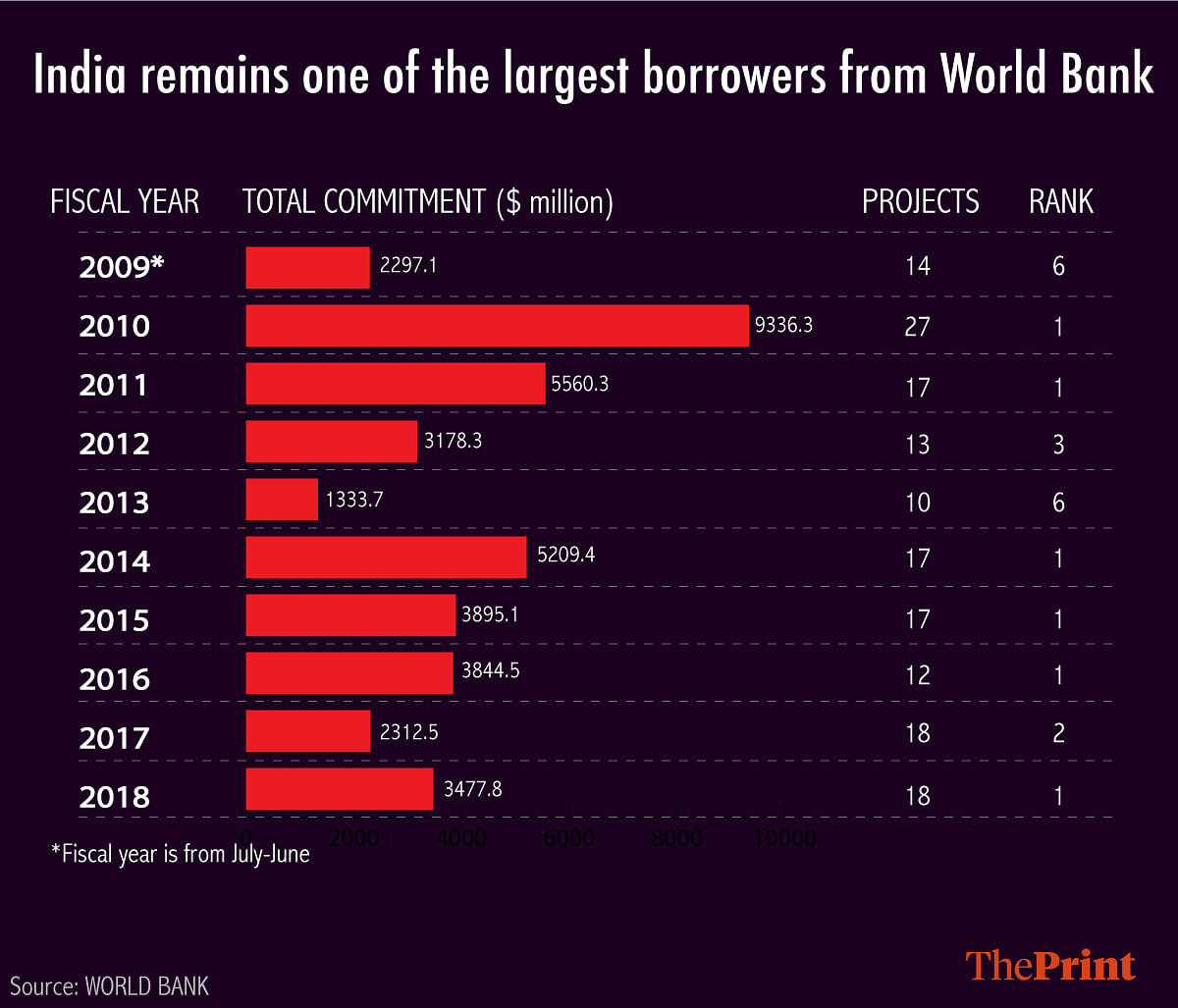New Delhi: India was the largest borrower from the World Bank for six of the last 10 years, data from the multilateral lending institution shows, reflecting the growing need for development finance in the world’s fastest growing large economy.
Between 2009 and 2018, the bank provided assistance to India across sectors like road and power infrastructure, agriculture, health, education and disaster management, shows ThePrint’s analysis of the projects funded.
Assistance refers to the total commitment made by the bank in a particular year for funding projects in the country.
The bank also funded projects related to climate change and strengthening institutions at the local level during this period.
The assistance peaked in fiscal year 2010 at $9.3 billion in the aftermath of the global financial crisis as the World Bank stepped up help to Indian banks to ensure credit flow to crucial sectors of the economy.

Data shows that though there have been variations in the funding annually, the assistance by the bank typically totalled to around $14-$15 billion over a four-year period. The tenure of the country partnership programme usually is 4-5 years.
While the assistance was in excess of $5 billion in the fiscal years 2011 and 2014, it was less than $2 billion in the fiscal year 2013.
The bank follows a fiscal year of July to June.
Also read: New study raises questions about China’s borrowing at World Bank
Among top recipients
To be sure, India’s funding demands have been much more than what has been actually lent on account of single borrower limits rules of the World Bank.
The bank had, however, relaxed the single borrower limits in fiscal year 2010 as it acceded to India’s demands for additional lending to ring-fence the economy against an economic downturn.
“During this period (10 years) India has been among the top recipients of this development finance, often the highest — an indication of India’s rising GDP (which impacts borrower limit) and the country’s ability to absorb and effectively utilise these lower cost funds for reducing poverty and boosting shared prosperity,” a World Bank spokesperson told ThePrint over email.
The bank provides low-cost loans and grants to countries, the terms of which vary from country to country depending on the level of economic development the country has achieved.
Most of the lending done by the bank is accompanied by technical assistance and policy advice “leading to improved results and compliance oversight leading to achievement of the project development objectives in line with the projects’ legal agreements”, World Bank said.
For instance, the bank helped India rebuild the cyclone-ravaged states of Odisha and Andhra Pradesh over the last decade under the National Cyclone Risk Mitigation project.
India, the seventh largest shareholder of the World Bank, has been getting the assistance from World Bank arms like the International Bank for Reconstruction and Development and International Development Association.
‘Building soft power’
“It is well-recognised that India is a resource short country. As a policy decision, India has decided to not take any aid from any bilateral source,” said Biswajit Dhar, professor at Jawaharlal Nehru University.
“But it is open to take assistance from multilateral lending institutions to meet its funding requirements.”
When asked why India provides aid to its neighbouring countries when it is evidently well short of meeting its own funding requirements, Dhar said it is India’s way of building political capital.
“India has been actively funding the development needs of some of its neighbouring countries but it’s quantum is much less as what is being, say, invested by China. It is a way of building its soft power in the region.”
Also read: India retains position as top receiver of remittances, says World Bank report






